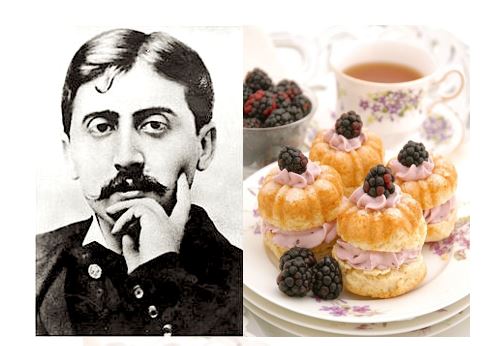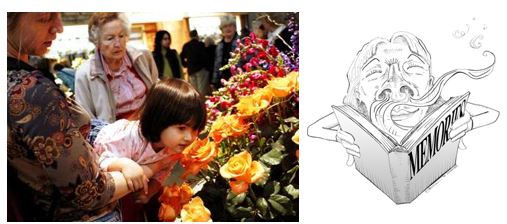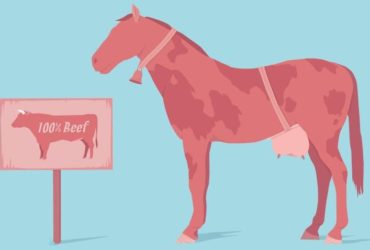BY: ALEX PIERCE-FELDMEYER
Do you ever experience a massive dose of kindergarten-ish nostalgia brought on by koala cookies? I know I do.

If you don’t find yourself hoping for a future full of authentic koala cookies, it might be because you didn’t grow up eating them every day for lunch as a child like I did. Those memories are so strong that now I am automatically transported to those days when I even think about those little morsels of cuteness.
If koala cookies didn’t spark that memory, something else that might bring about a similar feeling could be the holiday season. Do you feel nostalgic after consuming those chocolate chip cookies that grandma always sent you during Christmas time (let’s be honest they just aren’t as good when you try to make them yourself). Or what about the smell of your living pine-fresh Christmas tree? Maybe it brings back years of memories from exciting family Christmas mornings unwrapping gifts. Or maybe the smell of brisk Winter air brings back memories of caroling while drinking your dad’s famous Egg Nog. What’s amazing about these memories is that all it takes is a sniff of a similar aroma or flavor to elicit such a vivid depiction of the memory that it is tied to. The nostalgic feels hit you strong with one simple smell!
Why is it that so many of us cherish the holidays over other days of the year? It may be because we all get some time off, but one of the more resounding answers inevitably falls into the category of nostalgia for the past.
The word ‘nostalgia’ is of Greek origin, with ‘nostos’ meaning to return to one’s native land, and ‘algos’ referring to pain, suffering and grief, emphasizing the bittersweet nature to this theme (Holak and Havlena 1992). Nostalgia has historically been associated with homesickness (Holak and Havlena 1992), but has also been described as an adaptive mechanism to instill a sense of identity during life transitions (Davis 1979). However, in this day in time I think most people would agree it has more of a positive connotation. I enjoy nostalgic moments, because I can experience a happy memory or feeling all over again. In Holak and Havlena’s (1992) account of nostalgic elements often food plays a role, especially when holidays and family time are discussed.
Marcel Proust was a French novelist that described a childhood experience he remembered upon consuming his tea soaked pastry in one of his novels (Proust 1922/1960). He referenced the ability for odors and flavors to deliver powerful and emotion filled childhood memories and thus this idea has since been known as the Proust Phenomenon. These memories can be graphic, emotional and quite old (Chu and Downes 2000). So, the idea that food flavor and aroma can resurface memories is actually not that new.

The holidays impart heavier doses of nostalgia seemingly because of the tradition involved with this time of year. From my experience, it seems that nostalgic times resurface from either emotionally charged life events and/or because these events were reoccurring. Reoccurring events become something of a habit, making them easier to remember, likely going into long-term memory. That being said, it might make sense that holiday traditions (both emotional and habitual) would be ideal times to experience nostalgia.
But the other intriguing piece of the puzzle – why are the memories more vivid with the cue of a smell or flavor?
The holidays are filled with plentiful choices of foods and beverages. However, that is not the only reason feelings of nostalgia can be spurned by these holiday cues. It actually has to do with our biology.
Making memories

Creating a memory is about the chemistry of your brain. Memories are created by creating new synapses between neurons. Wait…say that again? Okay let’s start from the beginning. A neuron is a nerve cell in the brain. A neuron also has a structure called a synapse that allows chemical and electrical signals to be relayed between different neurons. The synapse between cells triggers chemical signals, also known as neurotransmitters, to be released and forms links between brain cells. Forming these links is how learning takes place. In other words, you are literally “connecting the dots” in your own mind (Mohs 2007). When learning occurs, new connections or ‘synapses’ are created.
With practice of what you learned, (e.g. studying for a chemistry final), synapses are reinforced, making what you learn become a part of your memory. With repeated exposure, memories become more solidified and may go into long term memory storage (Mohs 2007). The defining distinctions between long-term and short-term memory is that short-term memories have capacity limitations and temporal decay, or in other words, a dwindling of the memory as time passes (Cowan 2008). This makes sense, since you can study and put exam knowledge into short-term memory but it will only truly go into long-term memory if you continue to use the knowledge gained with continued practice.
What is even more interesting (I know you’re wondering how it could get much better, but just wait!) is that pairing these memories with an odor cue can make remembering feel more real. How does this happen you ask? Let’s find out!

https://www.capecod.com/lifestyle/the-science-of-why-we-love-comfort-food-a-sensory-experience-tied-to-memory/
Flavor and memories
One of the reasons food (particularly aroma) can be so powerful when it comes to experiencing nostalgia is because of the way we process flavor or aroma. When we smell, flavor volatiles, or aromas, are processed by the olfactory bulb, which connects to an area of the brain closely linked with emotion and memory: the limbic system, particularly the hippocampus and amygdala. More interestingly, these memories have also been found to be more lucid than ones brought on by images of the item that causes nostalgia. For example, particular areas of the brain exhibited higher functional magnetic resonance imaging (fMRI) activity when a nostalgic perfume was smelled than when using the visual images of the perfume to elicit memories (Herz et al. 2004). Our other senses do not bypass these regions of the brain, which is the reason why emotions and memories are not often triggered as strongly when you touch a certain texture or taste sweetness, or through viewing the image of the nostalgic item (Lewis 2015) https://www.psychologytoday.com/blog/brain-babble/201501/smells-ring-bells-how-smell-triggers-memories-and-emotions).

Furthermore, the feeling of ‘reliving’ memories via aromas might be because these recalled memories are sensorially being experienced again. That is, the sensory neurons that were initially activated during the encoding of that past episode are actually being reactivated in the same way they were during the first experience. In a ‘sense’, you are actually experiencing that episode again (Arshamian et al. 2013). It is also found that it is hard to create a different association with the same odor, because unlike synonyms in language, odors are apparently coded as distinct units without much redundancy (Collins and Loftus 1975). This can limit our associations, but over time it makes them stronger because other stimuli do not interfere with our perception (Engen 1987; Lawless 1978).
But hold on, this intense connection between nostalgia and aroma is not always pleasant. In fact, there is a definite downside to vivid emotional memories recounted from aromas. For example, patients with post-traumatic stress disorder (PTSD) can experience vivid flashbacks from particular aromas (Herz 2016). And because these flashbacks are so authentic with the aid of a smell, it can be quite unpleasant for the person experiencing it.
But many times these memories are warm and fuzzy, which opposes the origin of the word,” nostalgia” or painful memories. Nostalgia has a bittersweet notion, but more recently seems to bring about a more positive feeling. So I think it is important to remember that nostalgia was and can be sad to this day-it can be a reminder of what we’ve loved and lost. However, it can also connect us across time and space. I think it’s quite nice to be able to vividly relive a happy memory that has since dissipated with the aid of a characteristic smell. So, with that, I suggest you sniff around the cookie tins and all the desserts this holiday season until some flavor or aroma instantly snaps you back to the good ol’ days. Tis’ the season!
* Marcel Proust was a French novelist that described a childhood experience he remembered upon consuming his tea soaked pastry in one of his novels (Proust 1922/1960). He referenced the ability for odors and flavors to deliver powerful and emotion filled childhood memories and thus this idea has since been known as the Proust Phenomenon.






Leave a Reply